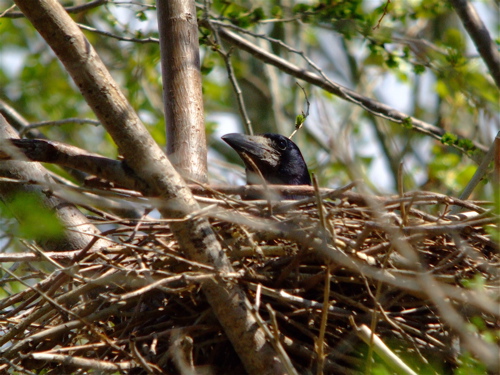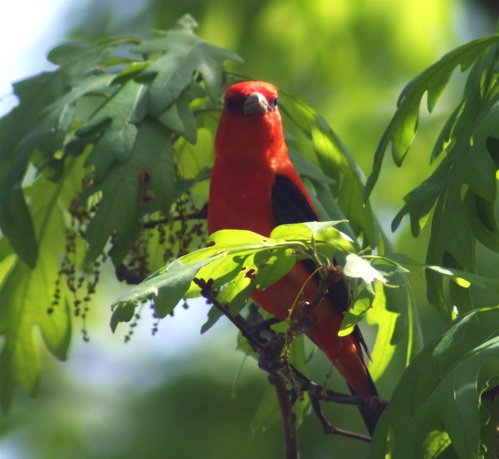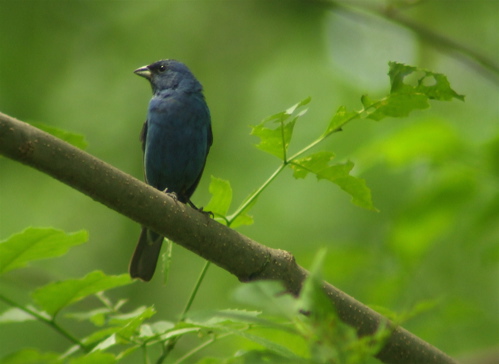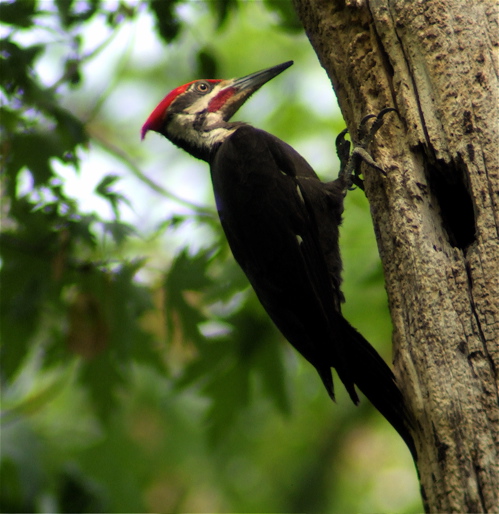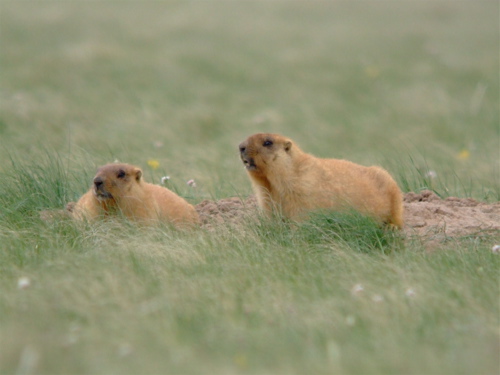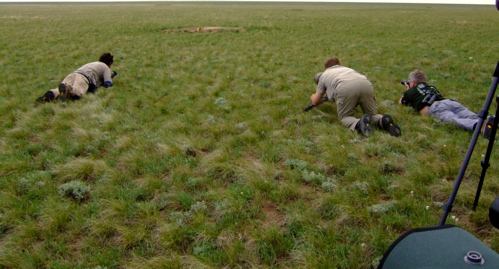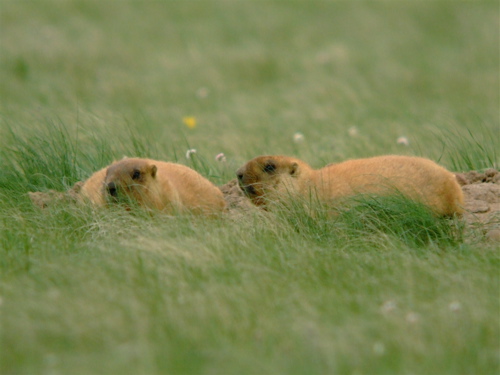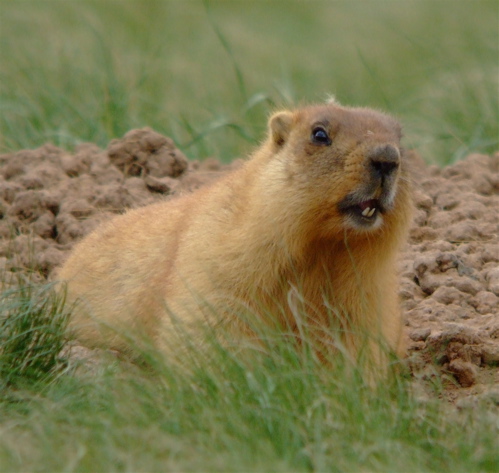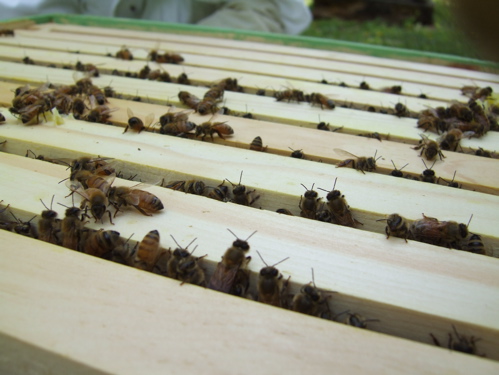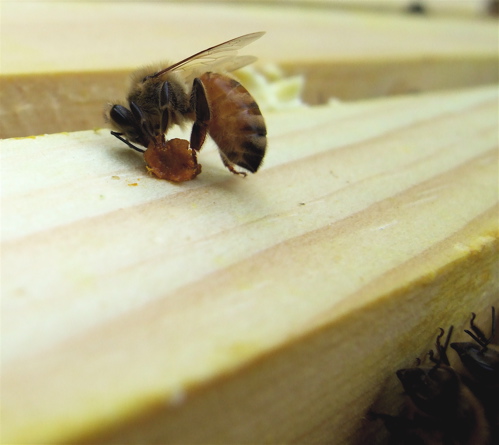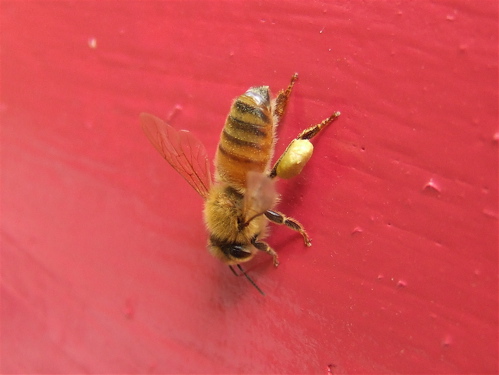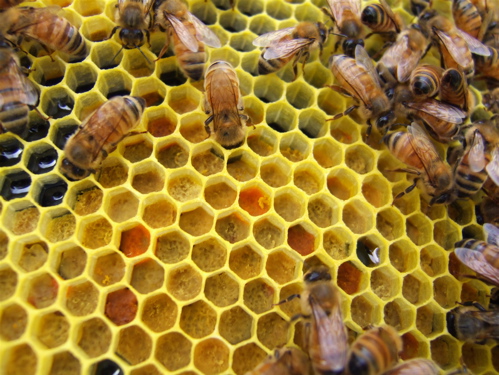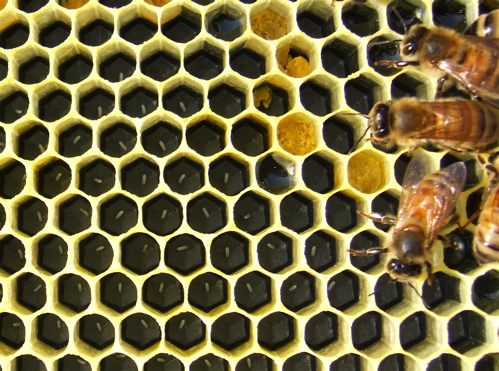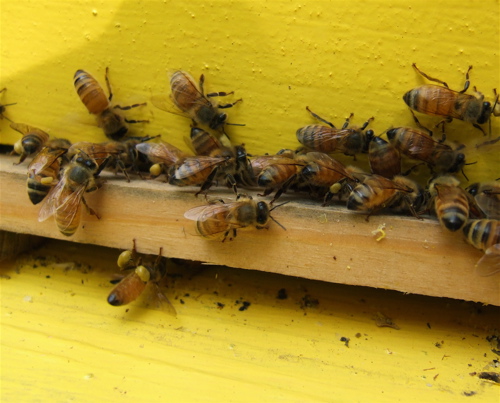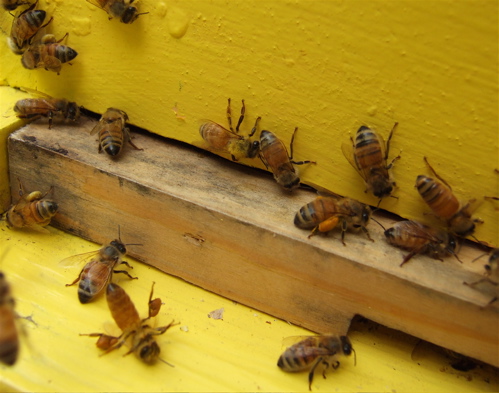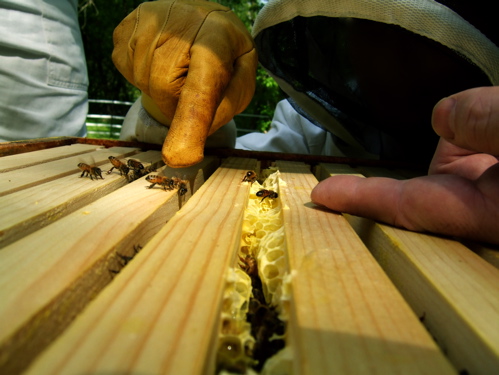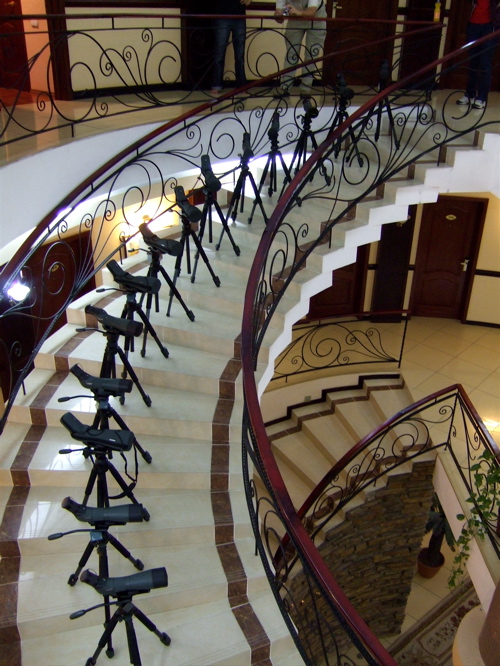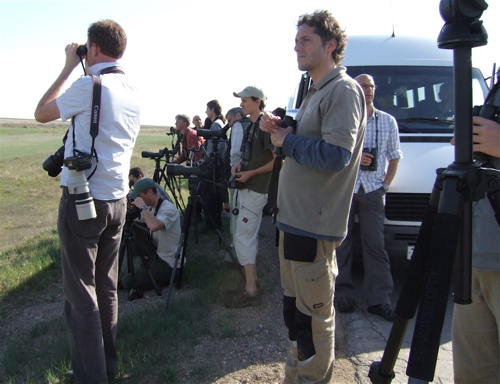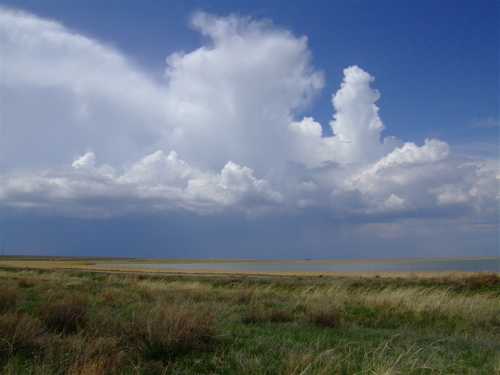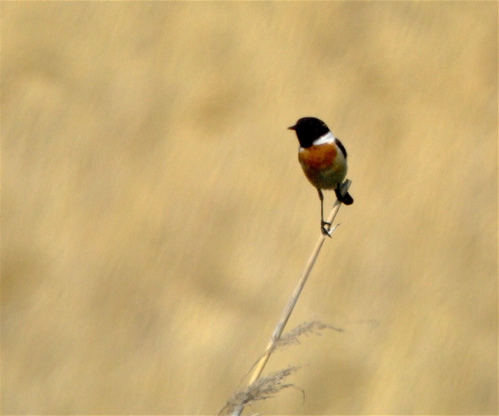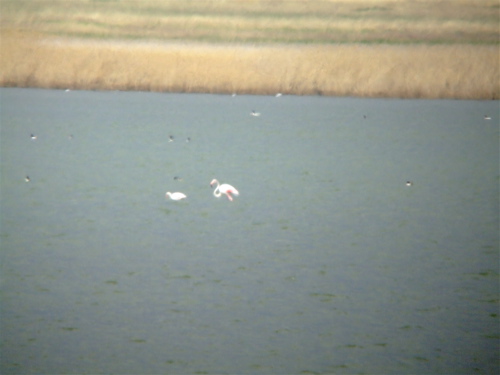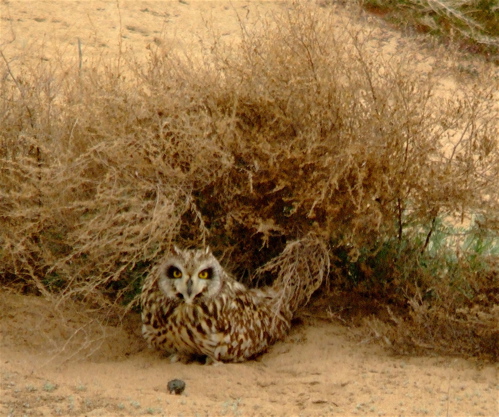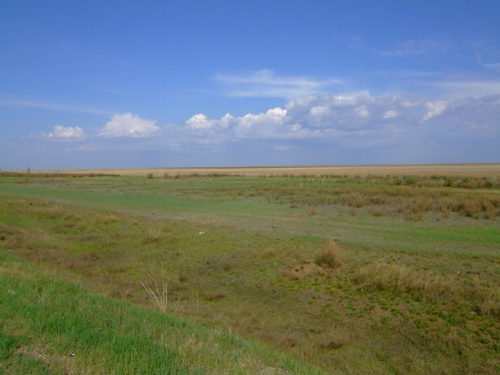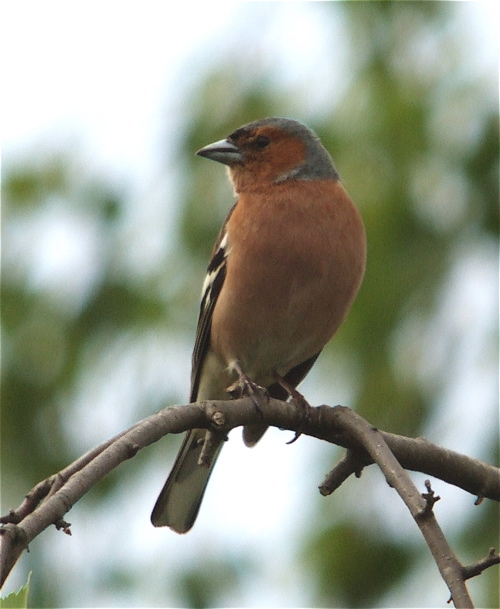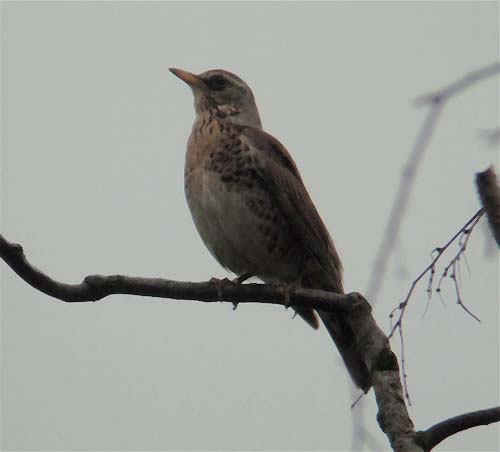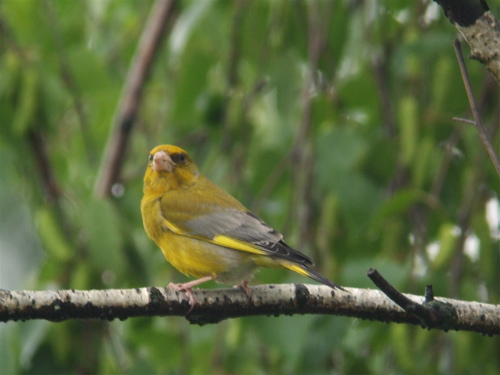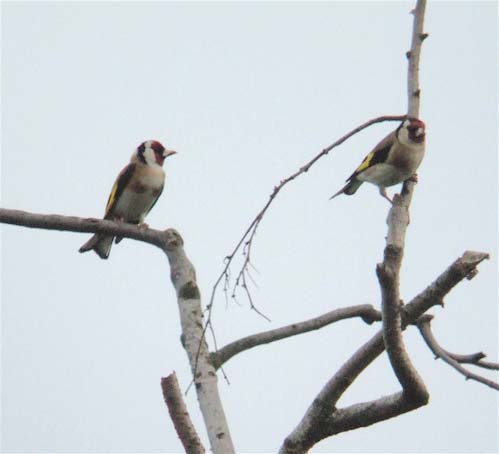There's a blog carnival up called Digiscoping Today. Submit your best digiscoping blog posts here.
I Learned Why It's Called A Rookery!
Hey, if you're looking for a good reference of collective bird names, check this out. I don't know about you, but I'm feeling about as giddy as a a conventicle of magpies. I've had more than one person ask me why heron colonies are called "rookeries" and I've never gotten around to looking up the answer. Well, I had the chance to find out first hand why they are called that.
We found a few spots in Kazakhstan where several large nests were built in the trees--not unlike heron nests.
Only these were not built by herons, but were built by rooks. They look like crows with a sort of reverse goatee thing going on. The area around their bill is featherless and shows pale gray skin. As we were looking at a rook in the field guide, my buddy Clay read, "Rooks nest in colonies called 'rookeries."
We both looked at each other and said, "Duh!"
I was excited at this realization--ah rooks--nesting together in a rookery--like a heron rookery. I was surprised that I didn't figure this out sooner. I have been vaguely aware of rooks, but since they are like crows and crows in my neck of the woods are not colony nesters, I never put two and two together.
Rooks are a common bird in Kazakhstan and in Europe. One of our fellow participants by the name of Mike Weedon thought it odd that I came all the way to Kazakhstan to get a photo of what would be a common garden bird for him--but one person's common bird is another's lifer.
Here's a video that isn't all that exciting, except that you can hear other rooks calling the background. I chuckled because I realized that when I was a kid and watched the movie, The Last Unicorn, rook calls were used in the background.
[youtube]http://www.youtube.com/watch?v=mMx3D63ZMxQ[/youtube]
Prepping For The Bio Blitz 2009
Friday was a fun and active day--between the weather, the birds and friends it was just a day where you look around and think, "Isn't great to be alive?" It's been wonderful to come home to spring birds and many of the Minnesota migrants have returned--even the common nighthawk, I heard one outside of the apartment my first night home.
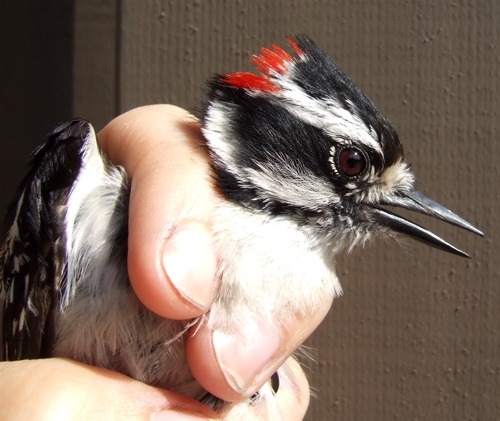
We did some banding at Carpenter Nature Center and though we didn't get huge amounts of birds, we got a good variety--especially woodpeckers. Above is a downy woodpecker male, we got in two of those, plus a hairy and a red-bellied woodpecker. I completely missed the red-bellied because...
... fellow bander Larry showed me shots of a scarlet tanager that was singing along the oak savanna trail at Carpenter. Since it was slow, I took off after it. The tanager was singing on territory and moving around like crazy. It was a challenge getting him in decent light (the best I could do was the above photo) and then I just gave up to watch him...that red is practically impossible to recreate and sometimes it just fun to watch a bird with your eyes, not with your camera's viewfinder.
After banding, I met up with a group who are helping to plan the Minnesota BioBlitz. It's going to happen in the National Park that I work in: The Mississippi National River and Recreation Area--specifically in Crosby Park.
Here is one of the many indigo bunting males staking claim on some territory along one of the trails--they should still be around for the BioBlitz June 12 - 13, 2009. We're going to catalog all the wildife we can find from bugs to plants to birds to mammals to reptiles to fungus and everything in between. We'll have walks, rides on a river boat, bird banding, and a whole host of stuff.
While walking the trails, a fellow ranger said, "I haven't seen a pileated woodpecker in a long time. I'd like to see one again." Within 2 minutes of her saying that, a male showed up. He stuck his head in a hole right off the trail...I'm about 90% certain he was feeding something inside the hole. He then flew off to another tree and did some territorial drumming. Here's a video:
[youtube]http://www.youtube.com/watch?v=TZlEnq2LZPM[/youtube]
It never ceases to amaze me how effortless woodpeckers look when they make that loud drumming sound. Incredible creatures.
Crosby is going to be a great spot for the BioBlitz--it's in the metro area, so it's easy to get to. Since it's right on the Mississippi River, there's going to be some great wildlife to see. If you are in the area, you should check it out, it's free and open to the public.
Bird TV Shows
A couple of birding show are trying to come down the pike. One is Birding Adventures hosted by James Currie. I actually met him a few months ago and he did a video clip saying why you should watch his tv show: [youtube]http://www.youtube.com/watch?v=lRBZv_lXGAE[/youtube]
It's not available on tv where I live, but you can order it online and watch it. I agree that Currie goes a long way to take the nerd out of birding. If you look on the website, they have him soaring in on a parachute while he screams, "This is what it's like to be condor. I'm coming in to my carcass! Whooo!"
Another birding guy by the name of Richard Crossley (known to many as one of the authors of The Shorebird Guide) is trying to get a birding tv show off the ground called Wild In The City. Where Currie's show appears to be more of "Hey let's go to cool places and just take in how cool these birds are," Crossley's looks more a listing tour, going from town to town and competing with teams to see who can photograph the most birds in a day.
Crossley isn't your garden variety birder either. The first time I met him was in a bar in Cape May, NJ. This British guy dressed as a vampire came up to our group and started talking birds and then moved on. That vampire birder was Richard Crossley.
Crossley is trying to convice Animal Planet that his show Wild In The City has legs and lots of birders will watch it. If you follow this link, it will take you to a preview and then a survey asking what you think.
Fun and Odd
Don't forget to vote for your favorite entry for the Birdorable Guest Blogging Contest. Voting ends today! There's a fun article up at World Hum by Sophia Dembling about her experience as a non birder at the Oklahoma Lesser Prairie Chicken Festival. It's a great read and I'm honored that she included my prairie chicken video.
Now that you've read that fun article, I have to show you this.
Check out this "eco-friendly" birdhouse. It's a solar powered bird house that lights up at night. Birds that nest in houses, naturally nest in tree cavities--where it's dark, they want it dark, they do not want a brightly lit perch outside the hole--they actually don't want a perch either. A well made bird house does not have a perch on it. If you watch birds that nest in cavities, the put their feet on the hole and push into the house. Sitting on a perch and turning their head is an awkward position for them.
The light could serve to attract predators. Some predators, like snakes and lizards would come to the light looking for insects attracted to it, and boy, what a delightful surprise to find eggs and chicks to eat.
I always thought the bird feeders that light up at night were silly, but it's decorative and birds aren't using it at night so it doesn't matter. But for nesting birds, this idea appears ill-conceived.
The Steppe Family
So in some ways it was like being around one large blended family when birding the Kazakh Steppes: What gull is that? Steppe gull. What eagle is that? Steppe eagle? Oh, cute! What mammal is that? Steppe marmot.
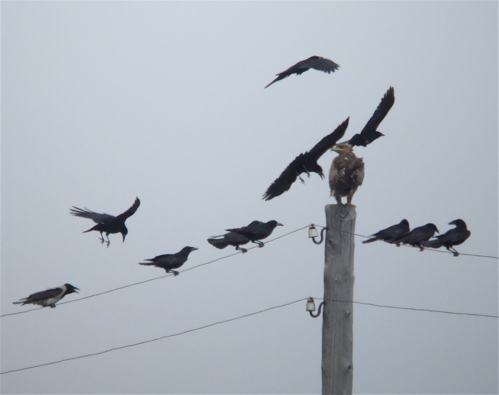
Above is a Steppe eagle being mobbed by a hooded crows, rooks, and carrion crows (apparently the crows did not get the memo that they should be Steppe crows).
Now, if you're wondering why is this area called The Steppes--is it one large stair case? No, it's basically short-grass prairie and I think the word steppe comes from a Russian word...which I don't have the keyboard to spell. Although, I just went to Babel Fish and typed in "Steppe" and it gave me this: Степь.
Quite a bit of the birding was like birding in North and South Dakota. But unlike North Dakota where we're only seeing less than 1% of the prairie that was once there, in Kazakhstan...it goes on and on and on. Our tour info read that there are less then 6 people per square mile in Kazakhstan. When you got out of the cities, you could feel how that number was true.
Above is a pair of Steppe marmots...kind of like groundhogs where I live. Although, with their coloring, they kind of looked like over sized prairie dogs.
Most in our group where digiscoping our adventures--using point and shoot cameras or SLRs attached to our spotting scopes to get photos. A few in our group would use their own cameras. It was fun to watch them sneak up closer and closer to the marmots. I actually have video of their movements...but I'm pretty sure I'd destroy some European relations if I posted it. As the photographers crouched closer and closer...
...the marmots crouched lower and lower in response. One finally went down in the burrow. The remaining marmot did not appear to buy our efforts at hiding:
It stood guard and barked at us. Here is a video and you can hear the high pitched barking (and lots of wind).
[youtube]http://www.youtube.com/watch?v=BUp0szhgJvg[/youtube]
We all got our shots and then left the barking marmots in peace.
I'm sure that marmot is feeling very macho and said to its partner, "Did you see that? That group of twenty humans stopped near our burrow, about a half dozen of them closed in and my mighty bark forced them to flee. I am Macho Marmot, Terror of the Steppes!"
Just don't try that strategy with a Steppe eagle, dude.
Bee Progress
Man, all week I have had great intentions but lingering jet lag and life has gotten in the way. Tuesday night, I thought I would do a quick bike ride, maybe bike to a restaurant with Non Birding Bill, have some quality spouse time, come home, do a wee bit of blogging, and watch a movie. Just as our bikes reached the restaurant...a screw found it's way into my tire and we had to walk home. A big thank you to the random hippie who slowed down and tossed a temporary patch and said, "Heeeeere, maaaaan, find somebody with a pump!" The thought was appreciated. We ended up over at my favorite bike shop--Sunrise Cyclery who quickly helped me out with a patch. But we came home late and exhausted.
Then yesterday, I was supposed to go out to some bald eagle banding and I thought I would come home in the afternoon, catch up on some blogging (do a bee update and then a little Kaz update), have a nice walleye dinner, watch Fight Club with NBB (a favorite date movie) and just relax. Due to high winds and uncertain nest locations we were out all day, dealing with high winds on the river, hot sun, climbing one really high hill, wading through stinging nettle. I came home to find the servers down or the site so no blogging which was fine, Sleep descended on me like a shark from the sky. I could not keep my eyes open, despite NBB, Brad Pitt and Edward Norton.
And now I have an enormous backlog (or should I say blackblog)...and in a couple of hours I'm going to be on a river boat teaching kids the wonders of the Mississippi River.
So, lets do a quick bee update.
For the most part, the four new hives are doing swimmingly! They are still so young and so new, they are quite friendly. Lorraine, further conquering her bee fear demons even went without gloves for this hive inspection. I was holding a frame looking at our hives' egg situation when Lorraine offered to hold for me. I said, "Dude, you forgot your gloves."
"No I didn't," she said. At first I admit I was skeptical, but she handled them well.
The bees themselves were more focused on eating and building up their hives. Above is a worker chowing down on some pollen patty crumb.
The bees eat a tiny bit of the pollen patty we make for them, but every year, new hives appear well capable of gathering their own. Check out this girl with fat baskets attached to her back legs. Dandelions are in heavy bloom, that could very well be the pollen in her baskets.
But the workers are finding other sources of pollen. Check out the colors of the stored pollen. There's bright yellow, but also dark orange. Where could that be from? Bees store pollen (their protein source) in the bottom of a food cell and then store honey on top of that.
All four of our hives had brood and eggs. You can see the eggs freshly laid by a queen in the above photo. Both the green Wendy hive and the red Juliet hive were built up quite a bit in their boxes--seven full frames. According to the way I was taught, when the bottom box has 8 of the ten frames built out, it's time to add a new box full of empty frames for building on top. But our first summer, we saw a hive at seven frames and decided to wait until she added one more...but she ended up swarming, so if they had seven frames drawn, we added another box to give them room to grow.
The purple Yvaine hive and the yellow Hannah hive were both a little behind in production. They had eggs, so the queens are present in both hives, but they are not working as fast as the other two. Check out the shot above of all the girls coming back with pollen. I love watching bees coming and going at an entrance. I took several photos.
When I was going through all my entrance shots, I noticed this one. I was going for the worker in the middle above the entrance reducer, she is very yellow (I suspect from pollen). But then, I noticed the poor bee on the bottom who appears to be falling ass over tea kettle. I had just adjusted the entrance reducer, so I think she wasn't ready for the change in position, flew into it, and got knocked on her back. Bees, so organized, yet sometimes not very graceful.
We had a friend out with us to the hives. Above, Mr. Neil is showing her how much bees enjoy the gag, "Pull my finger."
They love it.
Landing In Kazakhstan
We departed Frankfurt, Germany for Kazakhstan. Our flight left in early afternoon and between the long flight and time change, it was well past 11pm when we arrived in Astana, Kazakhstan.

As we de-boarded the plane, a woman in a corner wearing a lab coat and mask aimed some kind scanner at us to see if anyone was carrying a significant fever (presumably over swine flu fears). We got our bags, made through the above security screening and taxi drivers and were on our way to the hotel. The taller building had these odd lights surrounding their structures which gave the illusion that they were sparkling. We checked in and I made to my room a little after midnight. I called my husband through Skype to let him know I was alive and what my initial impressions were. I told him I had to meet the group at 6:30am and he told me to get to bed. As soon as I hung up, I heard outside my hotel room door:
"Hey, Shaz, you awake?"
It was my buddy Clay Taylor. I could hear mischief in his voice, so I said, "You betcha!"
"You gotta come out and see this!"
I stepped out and found on the hotel's spiral staircase:
that the jet lagged and somewhat slap happy Swarovski employees had artfully displayed all of their spotting scopes onto the stairs. Pictures were being taken at all angles and all this was going on well past 1am and we had to meet at 6:30am.
When I made it back to my room to settle in for a few hours sleep, I noticed this sticker on the mini bar. I'm not sure what the hotel was trying to tell me. Perhaps that I should feel comfortable enough to dawn a Speedo in my room and have some ice cream.
I'm also not sure if I have officially said why I went to Kazakhstan in the blog. Swarovski Optik is introducing some new equipment including spotting scopes, eye pieces, and digiscoping adaptor. They invited a group from the US and Europe to not only test out this new equipment but to also witness some of the work they are funding with the sociable lapwing with BirdLife International.
When the group introduced themselves at breakfast that first morning, I was struck that only Corey Finger of 10,000 Birds and myself were the only attending from the US. I was also the only one there remotely representing a birding publication from the US (you can find my articles in WildBird Magazine). The rest were editors of other birding publications from England, Germany, Italy, all over Europe--I'll go more indepth later, I have a new affection for birding with Eupopeans--especially the Brits. It's like birding with regular people who happen to have a strong interest in birds.
Anyway, with the group of people who were invited, I was honored to be included as an attendee and was constantly looking around asking myself, "How the heck did I end up here?"
Proving once again that the Talking Heads Letting The Days Go By is my theme song.
We started our birding adventure on the Steppes which was basically large tracts of short grass priaire. So much of it reminded me of the Dakotas. I had to contain myself as we passed common birds to make it to the assigned birding patch. But I couldn't help but salivate as we passed dozens of red-footed falcons nesting right off the side of the road.
However, a pair of demoiselle cranes was enough to force our buses over before we reached our destination. They were distant, but with the scopes we could get some souvenir shots. My point and shoot camera isn't strong enough to catch every detail when the bird is at a distance. When I looked through with my naked eye, I could see this birds blazing red eye--what a cool start to our birding trip.
One of the common birds we saw right away was this stonechat. As the birds popped up on the prairie, I was able to get some shots and felt a great relief that I wouldn't as challenging a time taking photos as I did under the heavy tree canopy in Guatemala.
A super exciting bird that I got to see at a great distance was a wild flamingo! I always thought that I would have to go to Africa to see one of those wild and untamed, but they also breed in Kazakhstan. Not the best view in the world, but still I was able to make out that iconic shape in the distance.
I was suprised by the overlap of species that I saw, that I could see in the US. Above is a short-eared owl--we saw a couple of them. I love this photo, the owl hidden in some brush, it would be hunting soon...note the big fat pellet on the ground in front of it (even its little ear tufts are up). This was not the only bird. At one point, I was watching some waterfowl and I heard the familiar "meep, meep, meep" of a gadwall. I thought it was a ringtone on my phone and then remembered my phone wasn't working and saw three fly overhead. It was nice and fun to see some familiar birds.
I have to step out to do some eagle banding, we will continue our Kazakhstan travels soon.
Birdorable Guest Blogging Contest: Voting!
 Time to vote for your favorite entry in the Birdorable Guest Blogging Contest!
You can view all the entries one this page. When you're done, simply pick your favorite from the drop-down list, enter your name and email address (which will not be sold, rented, given, or disclosed) before Friday, May 22nd at 5 p.m. CST. One vote per person.
Time to vote for your favorite entry in the Birdorable Guest Blogging Contest!
You can view all the entries one this page. When you're done, simply pick your favorite from the drop-down list, enter your name and email address (which will not be sold, rented, given, or disclosed) before Friday, May 22nd at 5 p.m. CST. One vote per person.

Each of the ten entries has already won a Tough Titmice Magnet from Birdorable, and the grand prize winner gets a Birdorable Spotting Scope shirt! The shirt pictured a red-cockaded woodpecker perched on the scope, but they said the winner can choose the bird species. So, if you would prefer something like a Cooper’s hawk, cardinal, or shag, they’ve got you covered.
 So, vote away!
So, vote away!
From Frankfurt With Love
I love this shot of the full moon visible from our flight to Europe.
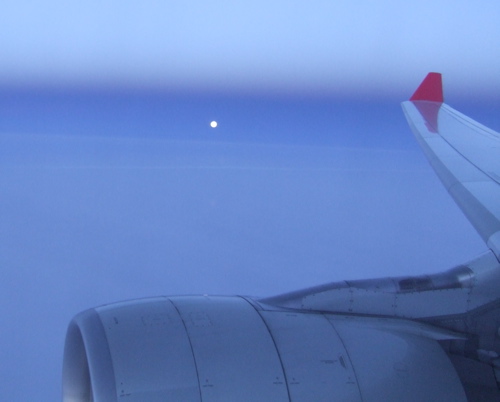
My journey to Kazakhstan started with a trip to Frankfurt. My flights worked out to go from the Twin Cities, to Detroit, to Frankfurt and then on to Kazakhstan. Originally, I was supposed to do this all in one day, but for whatever reason, it saved $1000 for me to arrive a day ahead, spend the night in Frankfurt and fly to Kazakhstan the following day--which I'm really glad happened that way. It gave me a chance to catch up with the time change...and finally do a bit of European birding. This was my first time across the Atlantic.
I was able to walk around the hotel and all the birds were new like the above chaffinch. I also looked forward to experiencing some of the iconic birds of Europe like the nightingale which I did not see, but only heard. This was fine with me, the song of the nightingale is written about so often, I'm not sure I would have counted it if I did not hear it (even if I saw it). Here's a sample of the nightingale song.
Some birds were just down right confusing to my little American brain. Above is a blackbird--as a matter of fact, this is the very blackbird referenced in the Beatles song, Blackbird Singing In The Dead Of Night...which this bird did do...right outside my hotel room window. However, if you look at the shape of this bird, it resembles an American robin, not something like a red-winged blackbird. Check out the bill on this bird.
Robins that I see are in the genus Turdus, their scientific name is Turdus migratorius. Well, the blackbird above has the scientific name Turdus merula--they are in the same genus as North American robins. European blackbirds are not the same as North American blackbirds, they are like our robins.
It gets more confusing!
Here is what a European robin looks like. It's not shaped like a Turdus at all (did I actually type that last sentence, yes I did). The European robin's scientific name is Erithacus rubecula, it's not in the same genus as North American robins, about all they have in common are featers, an orange breast and a love of insects for breakfast.
Anyway, here is another exciting (at least to me) Turdus that I got to see--a fieldfare. My only regret is that when I was finally able to get my hands on my digiscoping equipment, it was softly raining and the light was terrible. But I had a great time watching something shaped like the robin I'm used to, but colored in a different way.
This is a green finch. After hearing the nightingale, seeing the blackbird, and then seeing this bird I thought, "All I need now is a linnet and I have a song from Sweeney Todd." I didn't get one around the Frankfurt hotel, but did later in Kazakhstan. Score!
Here were some European goldfinches. This was interesting, because I periodically see these sold in pet stores in North America. It strikes me as odd that it's illegal to own North American birds as pets, but European birds are ok. Actually, according to this website, you can get some of the birds in this post (like the chaffinch and green finch) and some of the birds I saw in Kazakhstan as pets. Whoa, I just did some digging on their price list and found that one of their South American species for sale is a "yellow hood blackbird" which looks remarkably like a yellow-headed blackbird...that's not legal. And as much as I love those birds, I would not want them singing in my home on a regular basis.
Another fun bird to see what a white wagtails. I ended up seeing several different versions of this bird throughout my travels and each one is very striking. I'm sure it's a common bird, but it's a striking one to see.
That is a sampling of the birds that jump started my Kazakhstan journey. After an afternoon of birds, I met up with some of our other travelling companions, had a meal and got a good night's sleep before board a plane for parts unknown.


